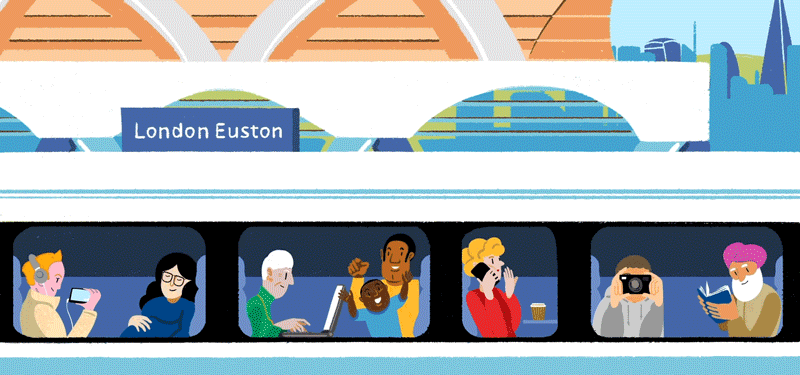A high-speed rail future beckons for Britain and will revolutionise travel.
DECEMBER 2019
UK government data shows that rail demand has more than doubled in the last 20 years. To transport the increasing number of rail-passengers, the government is building a new high-speed route that will connect cities across the country including London, Birmingham, Manchester, Preston, Lancaster, Glasgow, Sheffield and Leeds, to name but a few of the places that will benefit.
This infrastructure project will serve both commuters and communities alike. And it will help passengers to reduce their carbon footprint.

Let’s take a closer look at the benefits and why rail is on the rise.
High-speed rail will help to relieve congested and polluted commuter roads by providing faster, more regular, and more convenient transport links. The new infrastructure could remove millions of lorry journeys a year from the country’s roads by allowing more freight trains to run on the existing network. The government estimates that 4.5 million journeys that are currently made by plane could be completed using high-speed rail instead by the time the new network is complete. This means fewer traffic jams, less time spent waiting in airports and reduced environmental impact. Did you know that rail travel uses less energy per mile and per person than travelling by car? It also generates just 15g of C02/km compared with about 100g for flying.
Alongside removing cars from the road, which reduces pollution, the new network has a commitment to sustainability. The pledge includes planting 7 million trees during the first phase and applying strict regulation around the construction of the project to restore areas of natural beauty.
As journey times between the cities are reduced, we will see a more balanced spread of economic activity across England and Scotland. The UK’s economy is currently weighted towards London, with the capital providing almost a quarter of the UK’s economic output – the new lines will help to redress the balance by enabling businesses to share information and expertise between the different cities and access new pools of labour. Sir David Higgins, the former Chair of HS2 summed this up saying, “Connectivity equals jobs. In my view, it really is that simple.”
The UK has already seen the success of an existing high-speed rail line (High Speed 1), and with rail demand growing across Europe we can only expect further improvements to rail networks across the continent. Rail improves the lives of commuters, businesses and is a viable option for environmentally conscious travellers – it’s no surprise that it is on the rise!